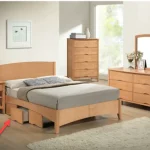Now Is the Time to Enhance Safe Spaces for Patients

Demand for behavioral healthcare likely will continue to climb as a result of the coronavirus crisis, but concerns about the safety of health facilities have given pause to many people as they consider pursuing treatment. There never has been a better time for your organization to establish a fully functioning culture of safety.
Creating a Culture of Safety
In organizations with a thriving safety culture, staff members serve as the safety net for patients. As The Joint Commission Center for Transforming Healthcare states, “Trust is the foundation of a safety culture. Trust leads concerned employees to report unsafe events and identify opportunities for improvement. When leaders respond positively to these opportunities, employees are further motivated to report, which in turn results in more improvement and builds even greater levels of trust.” The Joint Commission center has initiated a program to help health care organizations improve their culture of safety, an area where the health field is seen as lagging behind other industries.
Maximizing Safety in Healthcare Environments
Staff members thrive in environments that maximize safety for patients and themselves. At Furniture Concepts, we offer many options that give staff the peace of mind to know their work is being conducted in a truly healing and safety-conscious environment.
Our ligature-resistant furniture, open shelving, and sloped tops on wardrobes and storage cabinets limit risk to patients and make for ease of staff inspection. We offer upholstered motion seating that gives patients the comfort of rocking and gliding, enhancing the relaxed setting that everyone values during a time of upheaval in the world around us.
In these therapeutic environments, all staff can work together to help put patients at ease amid the great uncertainty about the future. As Joint Commission President Mark R. Chassin states, “In a health care organization that has a fully functional safety culture, everyone in the organization is engaged in safety.”
Conclusion
As the demand for behavioral healthcare increases, safety in healthcare environments is more crucial than ever. By fostering a safety culture, organizations can instill trust, promote collaboration among staff, and create spaces prioritizing patient well-being. Through initiatives aimed at enhancing safety practices and investing in furniture solutions designed for security and comfort, healthcare facilities can meet the evolving needs of patients while ensuring their safety remains paramount.
https://www.centerfortransforminghealthcare.org/en/
Learn More
Topics: Health Care Furniture, anti-contraband furniture, Extreme-Use Furniture, safety standard, group living furniture, Furniture for Treament Centers, anti-ligature furniture, high-Risk Environments, ligature-Resistant Furniture

















